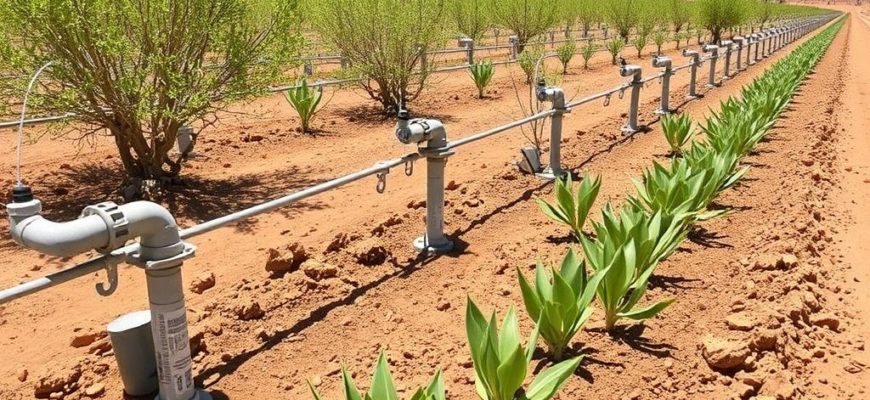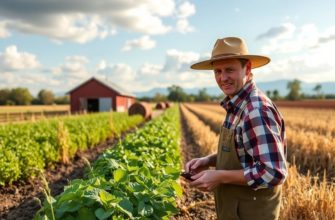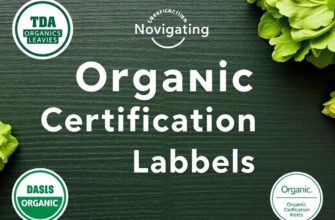Международное название:
Синонимы:
Характеристики:
| Сложность: | |
| Цикл развития: | |
| Световой режим: | |
| Режим полива: | |
| Температура: | |
| Почва: | |
| Ключевая черта: |
Цвет листвы
Цвет бутонов
Размеры цветка
Систематика:
| Домен: | |
| Царство: | |
| Отдел: | |
| Класс: | |
| Порядок: | |
| Семейство: | |
| Род: |
Living and farming in arid climates is like learning to dance with scarcity. Water is scarce, evaporation is high, and every drop counts more than in milder places. Yet communities, farmers, and city planners around the world have shown remarkable creativity in turning scarcity into strength — through water management and irrigation solutions that conserve, store, and wisely apply water where it’s needed most. This article walks you through the principles, technologies, and practical strategies that work in dry lands. Whether you’re a farmer looking to improve yields, a municipal planner wrestling with supply, or a homeowner wanting a green yard without waste, there’s something useful here for you.
I’ll keep it conversational and practical: why each approach matters, how it performs under real-world constraints, and what trade-offs to expect. I’ll also include clear lists and a comparison table to help you choose tools and techniques. Let’s begin by understanding the environment we’re dealing with, then move step-by-step into solutions that make a measurable difference.
- Understanding Arid Climates: The Big Picture
- Key challenges that shape solutions
- Principles of Effective Water Management in Dry Lands
- Prioritize water capture and storage
- Reduce losses and evaporative waste
- Match supply to demand with precision
- Work with the landscape
- Diversify water sources
- Irrigation Technologies That Shine in Dry Regions
- Drip irrigation: the precision champion
- Subsurface drip irrigation (SDI)
- Micro-sprinklers and low-pressure sprinkler systems
- Furrow and basin irrigation (improved surface methods)
- Center pivots and linear move (with low-pressure nozzles)
- Aquifer recharge and managed groundwater use
- Table: Quick comparison of irrigation options
- Water Harvesting and Storage: Capture When You Can
- Rainwater harvesting
- Check dams, contour bunds, and terraces
- Ponds, lined basins, and underground storage
- Managed aquifer recharge (MAR)
- Efficient Scheduling and Automation
- Soil moisture sensors and automated control
- Evapotranspiration (ET)-based scheduling
- Remote monitoring and IoT
- Soil and Crop Management: Making Every Drop Work Harder
- Mulching and surface cover
- Organic matter and soil structure
- Crop selection and rotation
- Timing and planting techniques
- Alternative Water Sources: Reuse, Desalination, and Treated Wastewater
- Treated wastewater (reclaimed water)
- Desalination
- Fog and dew collection
- Policy, Institutions, and Community Strategies
- Water pricing and incentives
- Community-led management
- Integrated water resource management (IWRM)
- Economic and Environmental Trade-offs
- Checklist for selecting irrigation solutions
- Real-World Examples and Small-Scale Innovations
- Smallholder drip retrofits
- Community sand dams and subsurface storage
- Urban gray-water reuse
- Innovative mulches and polymers
- Monitoring, Evaluation, and Learning
- Key performance indicators (KPIs)
- Table: Example KPIs and target values (illustrative)
- Step-by-Step Guide to Start an Irrigation Upgrade
- Common Mistakes and How to Avoid Them
- Looking Ahead: Innovation and Resilience
- Resources: Where to Learn More
- Conclusion
Understanding Arid Climates: The Big Picture
Arid climates are defined by low and often highly variable rainfall, high rates of evaporation, and frequent temperature extremes. These conditions create a simple fact of life: water that’s available now might not be available tomorrow. The main implications are straightforward — soil dries quickly, stored water evaporates fast, and crop stress can appear suddenly. That means any water management and irrigation solutions for arid climates must prioritize retention, precision, and resilience.
There are different types of arid environments too. Cold deserts like parts of Central Asia behave differently from hot deserts such as the Sahara or arid Mediterranean zones. Understanding local seasonality — when the rains, if any, arrive and when evaporation peaks — is the first step in designing a system that won’t fail during a drought year.
Key challenges that shape solutions
There are a few recurring problems that any strategy must address:
- Low and variable precipitation — you may get a little or a lot, but it’s unpredictable.
- High evapotranspiration — water applied to soil or plants can be lost to the air quickly.
- Poor or shallow soils — often sandy or compacted soils that hold little water.
- Salinity and water quality issues — in some arid regions, groundwater is saline or contains dissolved minerals that can harm crops.
- Infrastructure and cost constraints — technologies must balance capital cost, maintenance need, and local capacity.
Addressing these challenges requires a mix of engineering, agronomy, community planning, and wise policy.
Principles of Effective Water Management in Dry Lands
Before jumping into technologies, let’s agree on a set of practical principles that govern success. If your project follows these, you multiply the effectiveness of every drop.
Prioritize water capture and storage
Capture what falls. In arid environments, the first rule is to maximize collection — rain when it comes, runoff when it happens, and even fog and dew if feasible. Storage is equally important, and storage designs must minimize evaporation: underground cisterns, covered tanks, and aquifer recharge often outperform open reservoirs in hot climates.
Reduce losses and evaporative waste
Open canals and unlined earthen ponds lose a lot of water. Conveyance efficiency (how you move water) and application efficiency (how you deliver water to plant roots) both matter. Drip irrigation or subsurface drip lines, piping networks that minimize leaks, and mulches that suppress surface evaporation are all tactics here.
Match supply to demand with precision
Applying water where and when plants need it — not on empty soil or during peak heat — is central. Soil moisture monitoring, automated valves, and well-planned irrigation schedules can reduce waste dramatically.
Work with the landscape
Use contours, terraces, and retention swales to slow water, increase infiltration, and reduce erosion. Land reshaping can turn run-off into recharge for crops and groundwater.
Diversify water sources
Relying on a single source is risky. Combine surface water capture, groundwater (safely and sustainably), treated wastewater, and even desalinated water in coastal arid zones as part of a portfolio.
Irrigation Technologies That Shine in Dry Regions
Not every irrigation method is equally appropriate for arid climates. Below are widely used options with their strengths, weaknesses, and typical use-cases.
Drip irrigation: the precision champion
Drip irrigation delivers water directly to the root zone through small emitters or porous tubing. Because it minimizes surface evaporation and reduces runoff, it often yields the highest application efficiency. Drip systems are ideal for row crops, orchards, and high-value horticulture. Benefits include reduced weed pressure, lower disease from wet foliage, and the ability to apply fertilizers (fertigation) precisely.
Challenges: initial setup cost can be higher than basic surface irrigation, filters and emitters require maintenance, and poor-quality water can clog lines. However, long-term water savings and yield increases typically justify the investment.
Subsurface drip irrigation (SDI)
SDI places the drip lines under the soil surface, further reducing evaporation and protecting lines from damage and UV degradation. It’s particularly useful in very hot or windy arid zones and where surface salinity is an issue, because salts can be kept below the root zone.
Challenges include complexity of installation, difficulty in detecting and repairing leaks, and suitability limited to certain crops with stable row patterns.
Micro-sprinklers and low-pressure sprinkler systems
Micro-sprinklers provide light, localized sprinkling suited to orchards, vineyards, and some vegetables. They are more uniform than large-scale sprinklers and can cool plants on hot days (though cooling isn’t always desirable because of evaporation).
Benefits: flexible coverage, can wet a larger root zone than drip. Drawbacks: more evaporation loss than drip, potential to wet foliage (risk of disease), and still vulnerable to wind drift in very exposed areas.
Furrow and basin irrigation (improved surface methods)
Traditional surface techniques can still be viable if modernized: lined canals, laser-graded fields, gated pipe delivery, and surge irrigation can cut water losses dramatically compared to old flood methods. In some settings, the low initial cost and simplicity make these the best option.
Challenges: higher evaporation and deep percolation losses than drip; still suitable only with careful management and soil that can hold water.
Center pivots and linear move (with low-pressure nozzles)
Large-scale systems can be adapted for aridity by using low-pressure nozzles, drop-tube systems, or by integrating soil moisture sensors to schedule runs. Center pivots are mechanically intensive but can serve extensive fields efficiently.
Challenges: higher energy requirements, more evaporation than subsurface systems, and may require significant capital outlay.
Aquifer recharge and managed groundwater use
Where groundwater is available, managed aquifer recharge (MAR) can store excess surface flows during wet years for use in dry years. Techniques include spreading basins, recharge wells, and infiltration galleries. Responsible groundwater management pairs pumping policies with recharging strategies to avoid long-term depletion and land subsidence.
Table: Quick comparison of irrigation options
| Method | Water Use Efficiency | Typical Cost | Best For | Main Drawback |
|---|---|---|---|---|
| Surface (flood, furrow) | Low to moderate | Low | Large, flat fields with water access | Evaporation, deep percolation losses |
| Drip irrigation | High | Moderate to high | Orchards, vegetables, high-value crops | Clogging, maintenance required |
| Subsurface drip (SDI) | Very high | High | Row crops with stable layout | Repair complexity |
| Micro-sprinkler | Moderate | Moderate | Orchards, vineyards | Evaporation/wind drift |
| Center pivot | Moderate | High | Large-scale row crops | Energy use, evaporation |
| Managed aquifer recharge | N/A (storage technique) | Variable | Regional water balance | Requires hydrologic studies |
Water Harvesting and Storage: Capture When You Can

In arid landscapes, you often don’t get water when you need it — so you must capture it when it arrives. Water harvesting comes in many forms, ranging from household rain barrels to large-scale catchment systems.
Rainwater harvesting
Simple rainwater harvesting systems collect roof runoff into tanks or cisterns. Even in arid zones, intense storms produce valuable pulses of water. The design should consider filtration and first-flush diverters to avoid contaminating storage with debris. For farms, rooftop capture on sheds and greenhouses can supply irrigation for high-value crops.
Benefits: decentralizes supply, reduces pressure on aquifers, inexpensive at small scale.
Check dams, contour bunds, and terraces
At landscape scale, small check dams and terraces slow water on slopes, enhance infiltration, and reduce erosion. These structures recharge soil moisture and shallow groundwater, benefiting vegetation downstream and in adjacent fields.
Ponds, lined basins, and underground storage
Surface ponds are useful but vulnerable to evaporation and seepage. Lining ponds minimizes losses. Underground storage — such as tanks, buried cisterns, and aquifer recharge — protects water from evaporation and reduces salinity concentration.
Managed aquifer recharge (MAR)
MAR strategically sends excess surface water into aquifers using infiltration basins or injection wells when runoff is available. The stored groundwater can then be pumped during dry periods. MAR is especially effective when coordinated with seasonal flow patterns and when geological conditions support infiltration.
Efficient Scheduling and Automation
The best irrigation system can still waste water if scheduled poorly. Scheduling determines when, how much, and where water is applied.
Soil moisture sensors and automated control
Sensors measure volumetric water content or tension and, when connected to controllers, can trigger irrigation only when plants need water. This cuts unnecessary cycles and can adapt watering to microclimates within a field. Many sensors are now affordable and integrate with smartphone apps.
Evapotranspiration (ET)-based scheduling
ET estimates how much water plants lose to the atmosphere. By linking local weather data to crop coefficients, you can calculate daily water needs and apply irrigation precisely. This is very effective in arid climates because ET rates drive plant stress quickly.
Remote monitoring and IoT
Internet-of-Things devices let you monitor pumps, tanks, soil sensors, and weather stations remotely. Alerts can warn of leaks, pump failures, or overuse. For community systems, remote telemetry enables managers to optimize supply across many users.
Soil and Crop Management: Making Every Drop Work Harder
Soil is the reservoir closest to your plants. Improving soil health multiplies the effect of irrigation.
Mulching and surface cover
Organic mulches (straw, compost, wood chips) and inorganic mulches (plastic films) reduce evaporation, suppress weeds, and moderate soil temperature. Mulches are one of the simplest, most effective ways to conserve moisture in arid climates. Living mulches — low-growing groundcovers — can also shade soil but must be managed to avoid competition for water.
Organic matter and soil structure
Adding compost and adopting practices like cover cropping improve the soil’s ability to hold water. Better soil structure increases field capacity, meaning more water is available to plants between irrigations.
Crop selection and rotation
Choose drought-tolerant varieties, deep-rooted crops, and species adapted to your climate. Crop rotations that include legumes and deep-rooted plants can improve overall water efficiency and soil health.
Timing and planting techniques
Adjust planting dates to take advantage of cooler periods or residual soil moisture. Techniques like ridge planting, conservation tillage, and seed priming can improve germination and reduce early-season water needs.
Alternative Water Sources: Reuse, Desalination, and Treated Wastewater
Arid regions increasingly turn to non-traditional water sources.
Treated wastewater (reclaimed water)
When treated to appropriate standards, municipal wastewater can be a reliable irrigation source for many crops and landscapes. Reclaimed water reduces pressure on freshwater and can often be cheaper than importing water. Careful management of salinity and nutrients is necessary.
Desalination
Coastal arid regions sometimes rely on desalination for municipal and agricultural needs. While technically feasible, desalination is energy-intensive and expensive. Recent advances in renewable-energy-powered desalination are improving its sustainability profile for some communities.
Fog and dew collection
In certain coastal and mountain desert zones, fog and dew can be harvested using mesh collectors. This low-volume source is best for supporting small-scale plantings or supplementing domestic water use.
Policy, Institutions, and Community Strategies
Technical solutions work best when paired with governance that encourages conservation, fair allocation, and long-term planning.
Water pricing and incentives
Pricing water closer to its actual cost — including scarcity value — encourages efficiency. Subsidies for efficient irrigation equipment, or credits for on-farm water storage, can shift behavior. The design must protect vulnerable groups while promoting conservation.
Community-led management
Local water user associations, cooperatives, and municipal utilities often manage distribution and maintenance. When communities have clear rights and responsibilities, they invest more in repairs and efficient practices. Participatory planning ensures local knowledge feeds into technical designs.
Integrated water resource management (IWRM)
IWRM coordinates surface water, groundwater, environmental needs, and human demands across sectors. This holistic approach reduces conflicts and optimizes resource use across seasons and years.
Economic and Environmental Trade-offs
There’s no one-size-fits-all solution. Every intervention involves trade-offs in cost, energy, labor, and environmental impacts.
- High-efficiency systems like SDI save the most water per hectare but require capital and technical skill for installation and maintenance.
- Surface water storage is cheaper but loses more water to evaporation and may impact downstream ecosystems.
- Desalination secures supply but at an energy and carbon cost unless coupled with renewables.
- Using treated wastewater conserves freshwater but requires strong monitoring and public acceptance measures.
Conducting a cost-benefit analysis that includes long-term climate variability, energy prices, and labor availability is essential before committing to a particular pathway.
Checklist for selecting irrigation solutions
- Assess local water availability and variability.
- Test water quality for salinity, chloride, and particulates.
- Map soils for infiltration, water-holding capacity, and depth.
- Consider crop value per unit water — prioritize high-value crops for expensive systems.
- Evaluate local technical capacity for maintenance and repairs.
- Factor in energy costs and source (diesel, grid, renewable).
- Plan for monitoring — sensors, records, and simple indicators.
Real-World Examples and Small-Scale Innovations
Stories from the field often teach faster than theory. Here are a few practical adaptations seen in arid places:
Smallholder drip retrofits
In many semi-arid regions, NGOs and extension agents have helped smallholders retrofit simple drip systems using low-cost tubing, gravity-fed tanks, and locally sourced filters. These systems turned marginal plots into reliable kitchen gardens and doubled water productivity per plant.
Community sand dams and subsurface storage
In East Africa, sand dams built across seasonal streams capture sediment and store water under the sand, protecting it from evaporation and providing a reliable near-surface water pocket for domestic and small-scale irrigation.
Urban gray-water reuse
Households reuse lightly used water (from showers, laundry) for garden irrigation. When simple filters and diverters are used, this reduces potable water use for landscaping substantially.
Innovative mulches and polymers
Some farms use biodegradable films or polymer gels that absorb water and slowly release it to the soil. These can help with establishment of seedlings, though careful cost and environmental assessment is needed.
Monitoring, Evaluation, and Learning
To thrive in arid climates requires adaptive management — trying interventions, monitoring results, learning, and adjusting. Keep records of water applied, yields, soil moisture trends, and energy use. Over time, this data reveals which practices truly save water and increase resilience.
Key performance indicators (KPIs)
- Water productivity (yield per cubic meter of water)
- System efficiency (percentage of water reaching the root zone)
- Groundwater level trends (for aquifer-fed systems)
- Cost per unit of water delivered (including energy)
- Maintenance hours per hectare
Regularly review these KPIs with stakeholders and be willing to change course. What worked 10 years ago may be outpaced by newer, cheaper technologies or may no longer be appropriate under changing climate conditions.
Table: Example KPIs and target values (illustrative)
| KPI | Target for Efficient System | Notes |
|---|---|---|
| Water productivity (kg crop per m3) | 2–5 (varies by crop) | High-value horticulture can exceed 10 kg/m3 |
| Application efficiency (%) | 70–95 for drip/SDI | Surface systems often below 50% |
| Annual groundwater drawdown | Match recharge | Unsustainable if drawdown exceeds recharge |
| Energy per m3 delivered (kWh) | 0.2–1.0 (target lower) | Depends on pumping head and system |
Step-by-Step Guide to Start an Irrigation Upgrade
If you’re planning an irrigation project in an arid area, here’s a practical roadmap to follow:
- Assess water sources, variability, and quality. Do quick field tests for salinity and basic contaminants.
- Survey soil types across your site: permeability, depth, and organic matter.
- Determine crop choices and their water requirements. Prioritize high-value or drought-tolerant crops if water is limited.
- Decide on a water capture and storage strategy: tanks, recharge basins, or both.
- Choose irrigation technology based on cost, technical capacity, and crop: consider drip for orchards, SDI for permanent row crops, and optimized surface methods where budgets are tight.
- Include soil management practices: mulches, composting, and cover crops.
- Install monitoring: a few soil moisture sensors, a weather station, and simple flow meters.
- Create an operation and maintenance plan and training for local staff or family members.
- Monitor KPIs and be prepared to tweak schedules and system components seasonally.
- Scale up gradually as you gain confidence and data.
Common Mistakes and How to Avoid Them
Even well-intended projects can stumble. Here are pitfalls that recur and how to prevent them:
- Buying the fanciest equipment without planning for maintenance — ensure spare parts and training are available first.
- Ignoring water quality — install appropriate filtration and consider salt-tolerant crops if needed.
- Underestimating energy costs — calculate pump energy needs and explore solar or efficient motors.
- Failing to monitor — no monitoring means no feedback; simple measurements prevent large losses.
- Assuming a one-off solution — build flexibility into systems so you can adjust to changing conditions.
Looking Ahead: Innovation and Resilience
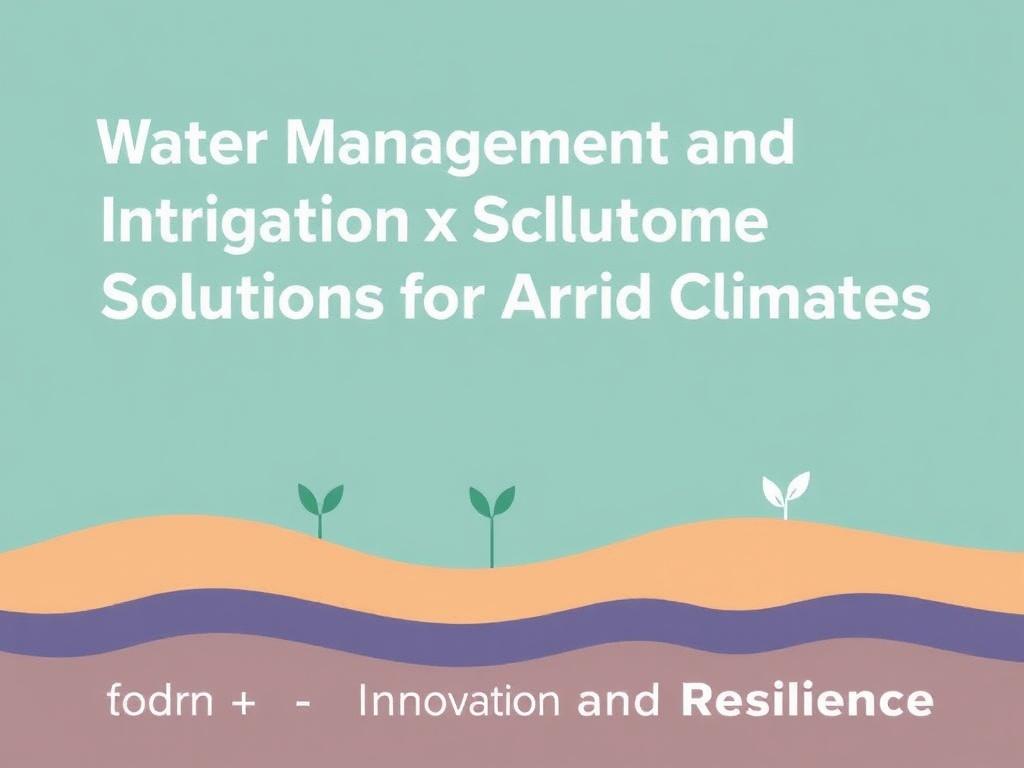
Technologies are evolving fast. Solar-powered pumps, cheap sensors, low-cost membrane desalination, and AI-based scheduling are making sophisticated water management accessible to more people. But technology is only part of the story. Resilience comes from combining technical systems with social institutions that manage water equitably, plan across seasons, and invest in soils and landscapes for the long term.
Climate change will increase variability in many arid regions, making the ability to store and move water across time even more critical. The best strategies are anticipatory: diversify water sources, reduce demand through efficiency, and build storage that protects against evaporation and contamination.
Resources: Where to Learn More
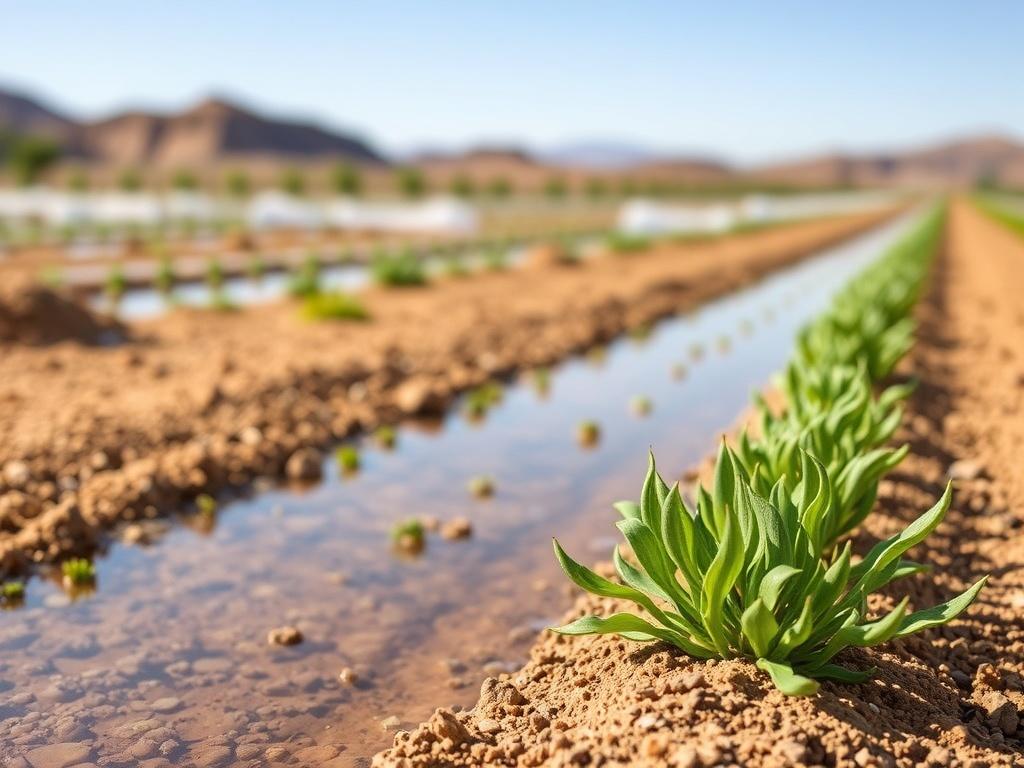
If you want to dive deeper, look for local extension services, agriculture universities, and development agencies that publish manuals on drip irrigation design, water harvesting, and soil management. Many open-access guides include design tables, maintenance plans, and supplier lists tailored to different regions. Online communities and farmer networks are also excellent sources of hands-on tips that fit local realities.
Conclusion
Water management and irrigation solutions for arid climates are about smart choices rather than magic fixes. By capturing what falls, storing it wisely, minimizing evaporation, matching supply to plant demand, and improving soil health, you can stretch scarce water to meet agricultural and household needs. Drip systems, subsurface storage, rainwater harvesting, responsible groundwater recharge, and reclaimed water all have roles to play — the right mix depends on local water, soils, crops, and community capacity. Start small, monitor everything, and scale what proves effective; with careful planning and adaptive management, arid landscapes can support resilient livelihoods and productive agriculture while safeguarding precious water for future generations.
Оценивайте статью, делитесь материалом с друзьями в социальных сетях, а также высказывайте свое мнение в обсуждении ниже! ![]()
